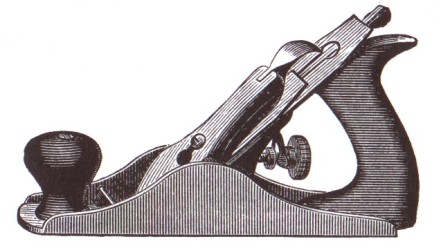Understanding Type Studies
July 12, 2012 Leave a comment
 Let’s be honest, Type Studies are confusing to a lot of people, especially those new to tool collecting. One reason for this is that by their very nature, Type Studies attempt to identify very specific points in time that correspond with transitions in the design and manufacturing process of tools made in the past. There are many problems with this. First and foremost, manufacturers never imagined that anyone in the future might care about tracking changes in the evolution of their designs. Subsequently, even veterans who know better sometimes lose sight of just how blurry those lines of delineation are along the historical manufacturing timeline.
Let’s be honest, Type Studies are confusing to a lot of people, especially those new to tool collecting. One reason for this is that by their very nature, Type Studies attempt to identify very specific points in time that correspond with transitions in the design and manufacturing process of tools made in the past. There are many problems with this. First and foremost, manufacturers never imagined that anyone in the future might care about tracking changes in the evolution of their designs. Subsequently, even veterans who know better sometimes lose sight of just how blurry those lines of delineation are along the historical manufacturing timeline.
The first thing to clearly understand is that Type Studies are a present day construct. They were not a production guide used by manufacturers to identify, notate, or track changes in design. Stanley and their competitors didn’t follow Type Studies. Why, you ask? Because Type Studies didn’t exist at the time the tools were made. Did you get that? Type Studies are a present day guide.
It was not until the 1970s and ’80s that people really started thinking about collecting vintage hand tools. And it’s only in the last 10 or 15 years, when woodworking with hand powered tools has enjoyed a resurgence, that vintage tool collecting has started to explode in popularity. The big name hand tool aficionados (Roger Smith, Alvin Sellens, Clarence Blanchard, and others) conducted extensive research, pouring over company records and old catalogs and detailing the physical variations of thousands of tools in order to begin piecing together timelines for various models.
These timelines, delineated by significant and important changes in the design and manufacture of a tool are referred to as Type Studies. Different ‘Types’ within a Type Study refer to a defined period of manufacture in which a particular set of features was unique. That said, the change from one Type to another doesn’t mean the entire tool was redesigned. In fact, virtually all feature changes overlapped others, and a given feature or set of features might extend over several Types. A good example can be illustrated with the lever caps used on Stanley’s Type 13-15 bench planes made between 1925 and 1932. While the same design cap was used on all three types, there were other feature changes that delineate the three different date ranges on the Type Study time-line.
Summing it all up, here are five important confusion-busting facts about Type Studies that should provide clarity:
- Type Studies are modern-day timelines used to identify the age of a tool by referencing important changes in its design, manufacture, and physical characteristics. Different ‘Types’ within a Type Study refers to a particular period of manufacture in which a particular feature or set of features was unique.
- Manufacturers didn’t adhere to Type Studies because Type Studies did not exist at the time. They simply manufactured tools and made periodic changes to design and manufacturing processes, just like manufacturers today. We identify those periodic changes in the Type Study, and subsequently assign ‘Types’ based on the time period in which they were made.
- Type Studies are not interchangeable. They only apply to a specific model or series of tools. Different tools and different lines will have different Type Studies. For example, Stanley’s Bailey line of bench planes have a completely different Type Study from the Bed Rock series. Some tools, like the no. 71 router plane, have their own individual Type Study. Many tools have never been studied in depth and don’t have a Type Study at all.
- Type Studies are approximations. The manufacturing timeline was constantly evolving. Even when design changes were made, existing (old) stock parts were used until their supply was depleted before moving to new parts. Therefore, the changeover of features sometimes took months or even years, resulting in multiple variations of the same product being released at the same time. While Type Studies imply that these changes were aligned with a specific date or year, collectors need to understand that the transitions were more evolutionary than revolutionary.
- Type Studies are not all-inclusive. With some manufacturers and some tools, and some tools made during certain periods, features and materials varied quite a bit. A good example of this is Stanley’s offering of Bailey bench planes made during World War II. Brass was in short supply, and subsequently, the so-called Type 17 planes made during the war years have a variety of inconsistencies. Some had brass hardware, where others have steel. Some have rosewood knobs and totes, while others have painted hardwood. Some have frog adjustment mechanisms while others don’t. All made during this period, however, are considered Type 17, regardless of features.
***